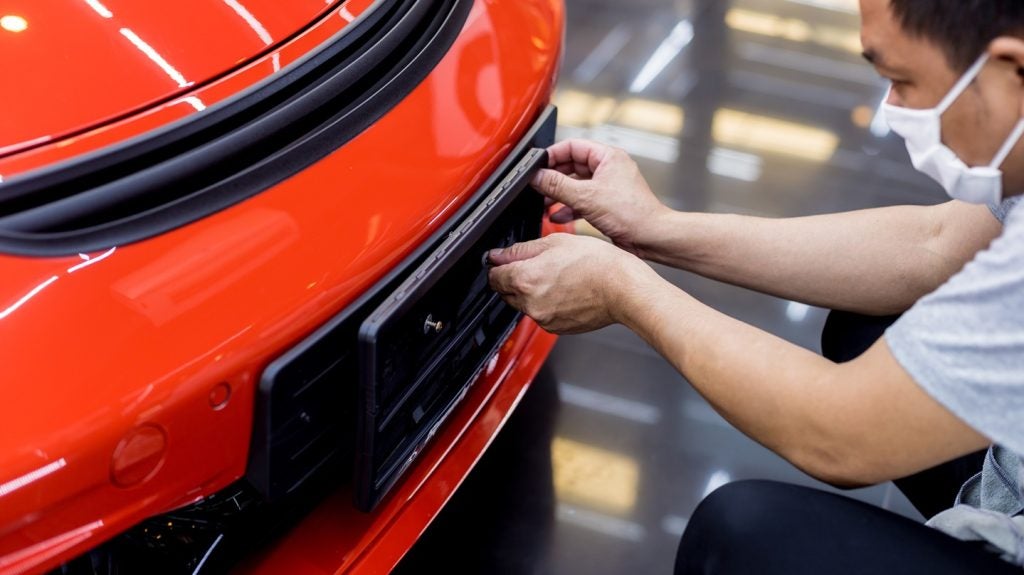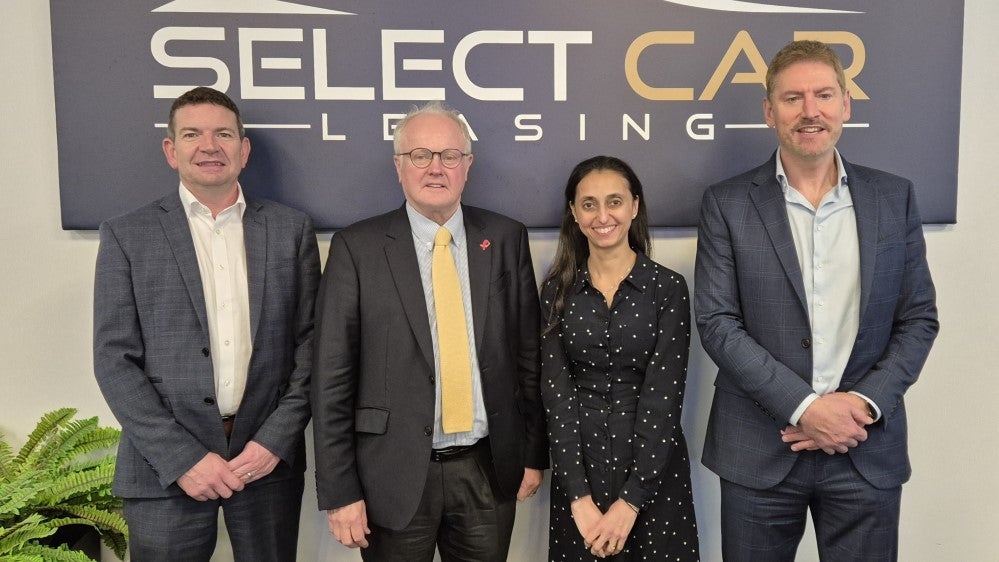
Hybrids, plug-ins and EVs still account for barely 0.5% of the car parc in Europe. However, manufacturers may not have to wait for widespread adoption before investments in alternative fuels pay off. Lorenzo Migliorato looks at how carmakers are broadening their approach.
Carmakers have been looking into electricity as a commercial successor to the internal combustion engine for quite some time now: the first electrified passenger car, the Toyota Prius hybrid, was commercialised in 1997.
Fast-forward two decades, and 2017 was arguably the year that producers put their money where their mouth was. Billions have been pledged in research and development on electric vehicles (EVs), with virtually all major carmakers aiming to offer electrified powertrains on every model by the mid-2020s.
It will take some time before the costs bear profitable fruit. In Europe, hybrids, plug-ins and EVs still account for barely 0.5% of the car parc, according to the European Automobile Manufacturers’ Association. Yet despite a slow – but consistent – uptake, manufacturers might not have to wait for widespread EV adoption to start monetising their technological advances.
“There are two main opportunities for automakers, beyond just selling cars,” says Richard Howard, head of research at energy consultancy Aurora. “The first is to try and bundle in the actual charging [with the EV purchase]. That could be through the provision of charging infrastructure – either by the companies themselves or in some sort of partnership with other players.”
Howard cites Tesla’s charging network as an example: it was initially deployed by the company to create the right environment for its vehicles, but has subsequently developed to a point where there is no reason why it could not be converted into a commercial charging enterprise, competing with the likes of Chargemaster or OEM consortium Ionity.
How well do you really know your competitors?
Access the most comprehensive Company Profiles on the market, powered by GlobalData. Save hours of research. Gain competitive edge.

Thank you!
Your download email will arrive shortly
Not ready to buy yet? Download a free sample
We are confident about the unique quality of our Company Profiles. However, we want you to make the most beneficial decision for your business, so we offer a free sample that you can download by submitting the below form
By GlobalData“The other business model,” Howard continues, “is using the same charging technology, but in a different form – as a domestic storage device.”
Again, Tesla was a precursor here: its Energy range, comprising Powerwall storage units and solar panels, has been making its way into households since 2015.
The company further boosted its rebranding process from carmaker to energy company when it started supplying units to municipalities, infrastructure companies and even utilities providers across the world.
“Industrial uses are just another application of the battery technology,” says Howard. “Once you develop the technology, it is rational to look at how it can be used not only in a vehicle context, but also in other applications. It is just an extension of the same idea.”
Riding on the crest of their electric engine developments, other big names have since joined the scramble for household energy needs. The same year that Tesla launched its Powerwall, Daimler introduced its own energy storage range, manufactured by subsidiary Accumotive and marketed under the Mercedes-Benz brand. Its operations expanded from Germany to Benelux, the UK to as far as the US and South Africa. Mercedes-Benz Energy Americas even became its own subsidiary in the US.
“Mercedes-Benz has been producing hybrid and EVs for a decade, and has a lot of expertise in the field of battery technology,” Daimler tells Motor Finance in an email. “Thus, it was a logical step to enter the steadily growing energy storage market.”
More recently, in December 2017, Nissan introduced its own solar panel and energy storage package for households, starting in the UK and with plans for other countries.
While Aurora’s Howard thinks the country might be a bit of a harder sell compared to continental markets such as Germany – with the UK’s substantially lower residential tariffs providing less of an incentive to go off-grid – Nissan thinks that it is the perfect market in which to start out.
“In the UK, we have almost 900,000 households with [solar] panels already, which is fairly significant,” says Francisco Carranza, managing director at Renault-Nissan Alliance Energy Services.
“It is nothing to be ashamed of compared to Germany, Italy or Spain. It really is one of the top countries in terms of solar deployment. [Also,] the UK is a major industrial base for us: we have a lot of operations in the country, a lot of partnerships already in place, so it appears to be the most logical place to start with our offer.”
The moves by Tesla, Daimler and Nissan signal a trend that some in the energy industry – equally rivals and partners to carmakers in the household energy market – had already identified some time ago, including Paul Jan Jacobs, of Dutch energy company Eneco. “The giant is moving. [The automotive sector] is creating its own [energy] ecosphere,” he told the audience at industry conference European Utility Week in 2016.
He added: “BMW is not only building cars, [but also] investing in renewable energy generation, smart home services and charging and storage solutions. They are creating a new holistic system. New holistic business models will appear, reinforced by mobility. Electrification of vehicles will speed up the decentralisation of the energy system, and the extra demand for renewable energy.”
This prediction fits well with Carranza’s vision for the Energy Services business: “It is not necessarily coming from an industrial synergy. It is more of an attempt to realise our vision of a sustainable ecosystem.
“Our chairman [Carlos Ghosn] is putting a lot of energy and effort into realising that vision in which every house, building and car is powered by renewable energy. Every asset, or every battery, [cannot be] independent. All of them need to be contributing.”
Carranza continues: “We are starting with the car, and moving onto home batteries, building batteries, solar energy, and home energy systems. All these pieces are part of the bigger puzzle that is the ecosystem.”
Carmakers’ forays into domestic energy are not a scramble for additional revenues; as their statements show, they are part of the effort to cultivate the right environment for EV ownership costs to finally reach parity with those of traditional cars.
Aurora estimates that, assuming there are 10m more EVs on UK roads by 2035, the energy grid would need to provide an additional 7GW of electricity to meet peak demand in the evenings, when most drivers plug in their EVs. That is almost 15% more than current demand. However, with a smarter charging infrastructure that includes storage units, vehicle-to-grid functionalities and generally more energy autonomy on the part of households, the extra demand could be limited to a much more manageable 0.5GW.
“The possibilities for value creation are very diverse, and the offer and integration of local energy storages [contributes] – directly and indirectly – to the ecosystem of an electric vehicle fleet,” Daimler says.
Of course, there are already a number of startups out there whose business fully focuses on battery research, sometimes with ramifications in the car manufacturing space.
“Boundaries are a bit blurrier now, and the barriers for entry are being lowered a bit,” says Carranza. “We are expanding into areas where we think it makes sense to us. I believe that other companies are also expanding elsewhere.”
Carmakers, however, arguably have an advantage when it comes to distribution, according to Howard: “They already have huge economies of scale. Their business model is very apt at designing and producing change, and finding a route to the market.”
In fact, manufacturers are already thinking about how to use their existing distribution apparatus for energy products. “We are aiming to achieve strong partnerships and sell our products through various channels,” Daimler says. “Of course, our dealers are a future option as well.”
Carranza, meanwhile, says: “We are exploring new territory for our company. We would like to always be humble and innovative, and take different approaches when proposing products. Obviously, we are going to explore how far our current partnerships in distribution can help us, and take Nissan beyond cars, but nothing is decided yet.”
He adds that in pre-launch studies, his team found more than half of households used financing for their switch to solar energy – meaning that Nissan might cover that side of the business as well. “It is important to use our financing solutions for that, and we are working on it,” he says.
“So you will not be surprised if we start to offer financing alternatives.”







